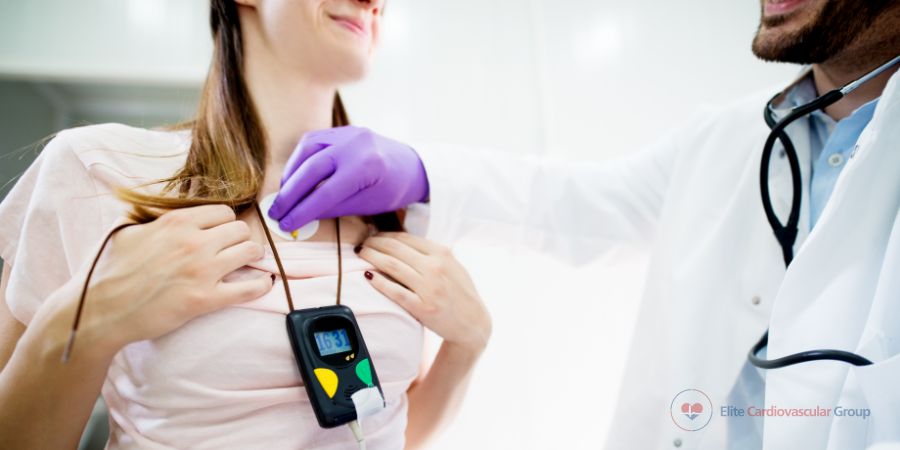Also known as: Holter monitor or Event monitor
Duration: 24 to 48 hours (or longer depending upon the individual’s scenario)
Ambulatory rhythm monitoring records the heart’s electrical activity. This test is performed when a standard EKG does not provide enough information.
Rhythm monitoring consists of the Holter Monitor and the Event Monitor. They are both portable devices and come with an adhesive patch or a band to wear around your neck so that it is near your chest throughout the duration of the monitoring. Your cardiologist will determine which device to wear and how long you need to wear it.

Types:
- Holter Monitor – continuously records your heart’s rhythm as you carry on with your daily activities. It is generally worn for 24 to 48 hours but may vary depending on specific conditions. You will be asked to press a button on the device whenever you experience symptoms to start recording. A symptom log will also be provided to write down more details about what you are experiencing. Once you have completed the test, you will be asked to drop off the device at your cardiologist’s office so that the test results can be analyzed and discussed.
- Event Monitor – unlike the Holter monitor, the Event monitor does not record the heart rate continuously. There are two subtypes:
- Symptom Event Monitor – has to be switched on when you are experiencing symptoms and the device will record for the next few minutes.
- Memory Looping Monitor – has the same function as the symptom event monitor but this device will record before, during, and after you experience your symptoms once it is activated.
Uses:
- To detect any irregular heart rhythm (arrhythmias)
- In unexplained fainting (syncope)
Preparing for the test:
![]() Download Pre & Post Test Instructions
Download Pre & Post Test Instructions
How it is performed:
- The technician may need to shave a part of your chest to place the sensors.
- Once your specific device is placed on your chest, you will be instructed on how to use it.
- You will be asked to keep a log or journal to track your activities and experiences while wearing the device.
Show references
InformedHealth.org [Internet]. Cologne, Germany: Institute for Quality and Efficiency in Health Care (IQWiG); 2006-. What is an electrocardiogram (ECG)? 2019 Jan 31. Available from: https://www.ncbi.nlm.nih.gov/books/NBK536878/
Rogoff B, Pride YB. ECG (EKG) Rhythm. [Updated 2020 Mar 29]. In: StatPearls [Internet]. Treasure Island (FL): StatPearls Publishing; 2020 Jan-. Available from: https://www.ncbi.nlm.nih.gov/books/NBK555952
